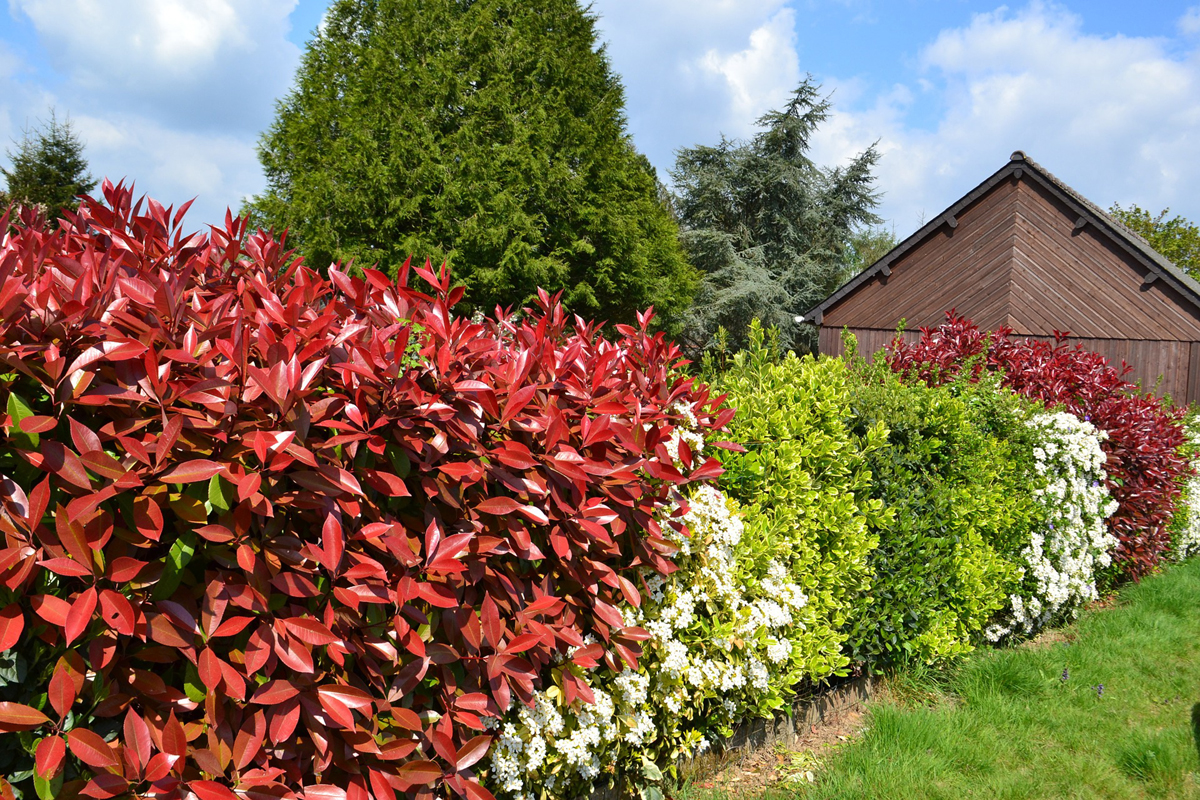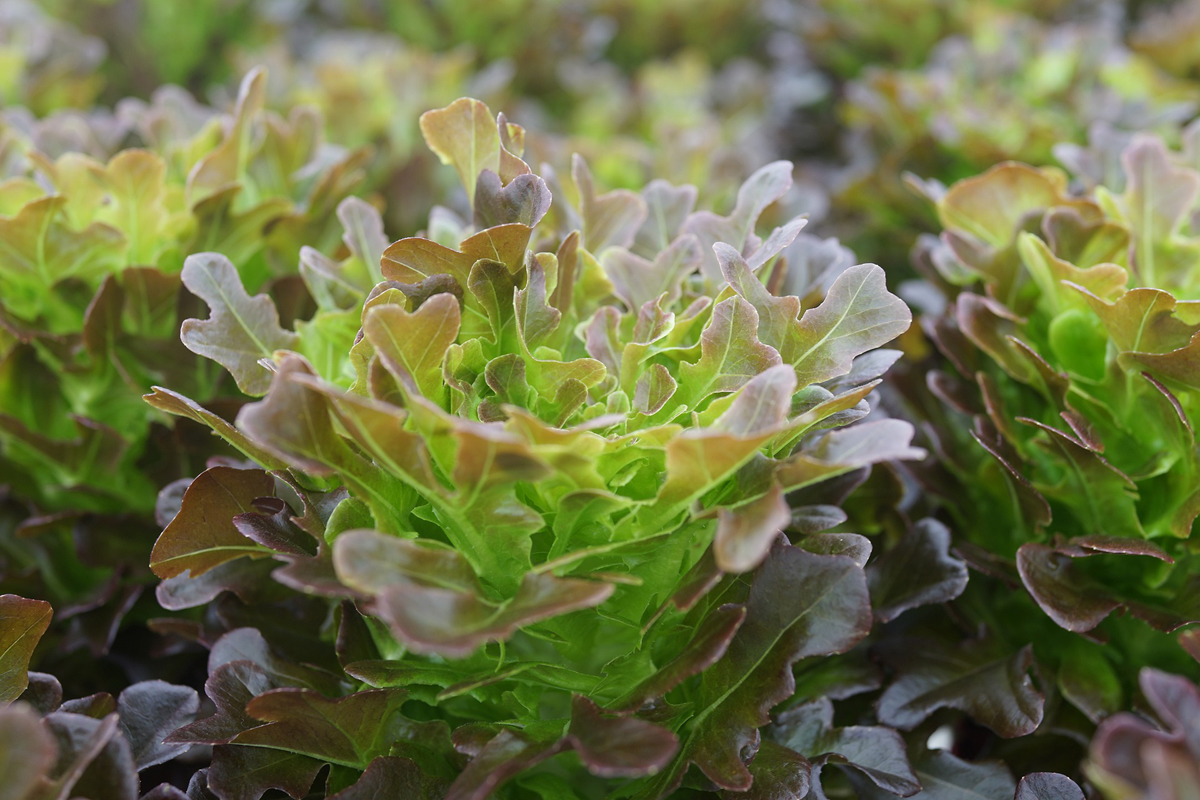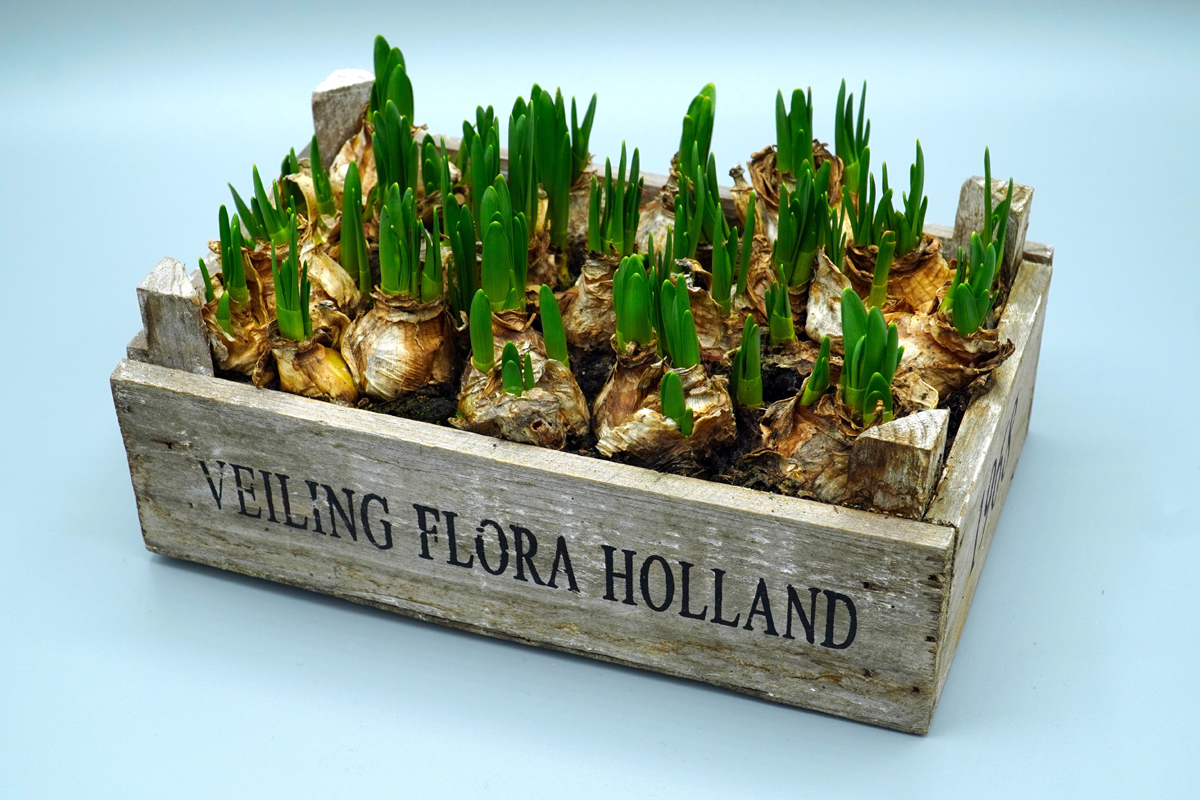Landscaping for Energy Efficiency

Landscaping for Energy Efficiency
Are you looking for cost-effective yet eye-pleasing ways to lower your energy bills? Planting trees, shrubs, vines, grasses, and hedges could be the answer. In fact, landscaping may be your best long-term investment for reducing heating and cooling costs, while also bringing other improvements to your community.
A well-designed landscape will:
* Cut your summer and winter energy costs dramatically.
* Protect your home from winter wind and summer sun.
* Reduce consumption of water, pesticides, and fuel for landscaping and lawn maintenance.
* Help control noise and air pollution.
This publication covers landscaping tips to save money year-round; ways that landscaping helps the environment; important climate, site, and design considerations; landscape planning; and tree and shrub selection. You can get additional information on regionally appropriate species from your local nursery and landscaping experts.
Landscaping Saves Money Year-Round
Carefully positioned trees can save up to 25% of a household s energy consumption for heating and cooling. Computer models devised by the U.S. Department of Energy predict that the proper placement of only three trees will save an average household between $100 and $250 in energy costs annually.
On average, a well-designed landscape provides enough energy savings to return your initial investment in less than 8 years.
An 8-foot (2.4-meter) deciduous (leaf-shedding) tree, for example, costs about as much as an awning for one large window and can ultimately save your household hundreds of dollars in reduced cooling costs, yet still admit some winter sunshine to reduce heating and lighting costs. Landscaping can save you money in summer or winter.
Summer
You may have noticed the coolness of parks and wooded areas compared to the temperature of nearby city streets. Shading and evapotranspiration (the process by which a plant actively moves and releases water vapor) from trees can reduce surrounding air temperatures as much as 9 degrees F (5 degrees C).
Because cool air settles near the ground, air temperatures directly under trees can be as much as 25 degrees F (14 degrees C) cooler than air temperatures above nearby blacktop. Studies by the Lawrence Berkeley Laboratory found summer daytime air temperatures to be 3 degrees F to 6 degrees F (2 degrees C to 3 degrees C) cooler in tree- shaded neighborhoods than in treeless areas.
A well-planned landscape can reduce an unshaded home’s summer air-conditioning costs by 15% to 50%. One Pennsylvania study reported air-conditioning savings of as much as 75% for small mobile homes.
Winter
You may be familiar with wind chill. If the outside temperature is 10 degrees F (-12 degrees C) and the wind speed is 20 miles per hour (32 kilometers per hour), the wind chill is -24 degrees F (-31 degrees C). Trees, fences, or geographical features can be used as windbreaks to shield your house from the wind.
A study in South Dakota found that windbreaks to the north, west, and east of houses cut fuel consumption by an average of 40%. Houses with windbreaks placed only on the windward side (the side from which the wind is coming) averaged 25% less fuel consumption than similar but unprotected homes. If you live in a windy climate, your well-planned landscape can reduce your winter heating bills by approximately one-third.
Landscaping for a Cleaner Environment
Widespread tree planting and climate-appropriate landscaping offer substantial environmental benefits. Trees and vegetation control erosion, protect water supplies, provide food, create habitat for wildlife, and clean the air by absorbing carbon dioxide and releasing oxygen.
The National Academy of Sciences (NAS) estimates that urban America has 100 million potential tree spaces (i.e., spaces where trees could be planted). NAS further estimates that filling these spaces with trees and lightening the color of dark, urban surfaces would result in annual energy savings of 50 billion kilowatt-hours — 25% of the 200 billion kilowatt-hours consumed every year by air conditioners in the United States. This would reduce electric power plant emissions of carbon dioxide by 35 million tons (32 million metric tons) annually and save users of utility-supplied electricity $3.5 billion each year (assuming an average of $0.07 per kilowatt-hour).
Also, some species of trees, bushes, and grasses require less water than others. Some species are naturally more resistant to pests, so they require less pesticides. Another alternative to pesticides is integrated pest management, an emerging field that uses least-toxic pest control strategies. One example is to introduce certain insects such as praying mantises or ladybugs to feed on — and limit populations of — landscape-consuming pests.
Certain grasses, such as buffalo grass and fescue, only grow to a certain height — roughly 6 inches (15 centimeters) and are water thrifty. By using these species, you can eliminate the fuel, water, and time consumption associated with lawn mowing, watering, and trimming. Also, recent studies have found that gasoline-powered mowers, edge trimmers, and leaf blowers contribute to air pollution.
Climate, Site, and Design Considerations
Climate
The United States can be divided into four approximate climatic regions: temperate, hot-arid, hot-humid, and cool. The energy-conserving landscape strategies you use should depend on which region you live in. These landscaping strategies are listed by region and in order of importance below.
Temperate
* Maximize warming effects of the sun in the winter.
* Maximize shade during the summer.
* Deflect winter winds away from buildings.
* Funnel summer breezes toward the home.
Hot-Arid
* Provide shade to cool roofs, walls, and windows.
* Allow summer winds to access naturally cooled homes.
* Block or deflect winds away from air-conditioned homes.
Hot-Humid
* Channel summer breezes toward the home.
* Maximize summer shade with trees that still allow penetration of low-angle winter sun.
* Avoid locating planting beds close to the home if they require frequent watering.
Cool
* Use dense windbreaks to protect the home from cold winter winds.
* Allow the winter sun to reach south-facing windows.
* Shade south and west windows and walls from the direct summer sun, if summer overheating is a problem.
Microclimate
The climate immediately surrounding your home is called its microclimate. If your home is located on a sunny southern slope, it may have a warm microclimate, even if you live in a cool region.
Or, even though you live in a hot-humid region, your home may be situated in a omfortable microclimate because of abundant shade and dry breezes. Nearby bodies of water may increase your site’s humidity or decrease its air temperature.
Your homes microclimate may be more sunny, shady, windy, calm, rainy, snowy, moist, or dry than average local conditions. These factors all help determine what plants may or may not grow in your microclimate.
Siting and Design
A well-oriented and well-designed home admits low-angle winter sun, rejects overhead summer sun, and minimizes the cooling effect of winter winds. If you are building a home, pay attention to its orientation.
In the northern hemisphere, it is usually best to align the home’s long axis in an east-west direction. The home’s longest wall with the most window area should face south or southeast. The home’s north-facing and west-facing walls should have fewer windows because these walls generally face winter’s prevailing winds. North-facing windows receive little direct sunlight.
You may be able to design and orient your new house to maximize your homesite’s natural advantages and mitigate its disadvantages. Notice your homesite’s exposure to sun, wind, and water. Also note the location and proximity of nearby buildings, fences, water bodies, trees, and pavement — and their possible climatic effects. Buildings provide shade and windbreak. Fences and walls block or channel the wind. Water bodies moderate temperature but increase humidity and produce glare. Trees provide shade, windbreaks, or wind channels. Pavement reflects or absorbs heat, depending on whether its color is light or dark.
If your home is already built, inventory its comfort and energy problems, then use the following landscaping ideas to help minimize these problems.
Shading
A 6-foot to 8-foot (1.8-meter to 2.4-meter) deciduous tree planted near your home will begin shading windows the first year. Depending on the species and the home, the tree will shade the roof in 5 to 10 years. If you have an air conditioner, be aware that shading the unit can increase its efficiency by as much as 10%.
Trees, shrubs, and ground cover plants can also shade the ground and pavement around the home. This reduces heat radiation and cools the air before it reaches your home’s walls and windows. Use a large bush or row of shrubs to shade a patio or driveway. Plant a hedge to shade a sidewalk. Build a trellis for climbing vines to shade a patio area.
Vines can shade walls during their first growing season. A lattice or trellis with climbing vines, or a planter box with trailing vines, shades the home’s perimeter while admitting cooling breezes to the shaded area.
Shrubs planted close to the house will fill in rapidly and begin shading walls and windows within a few years. However, avoid allowing dense foliage to grow immediately next to a home where wetness or continual humidity are problems. Well-landscaped homes in wet areas allow winds to flow around the home, keeping the home and its surrounding soil reasonably dry.
Wind Protection
Properly selected and placed landscaping can provide excellent wind protection, which will reduce heating costs considerably. Furthermore, these benefits will increase as the trees and shrubs mature. The best windbreaks block wind close to the ground by using trees and shrubs that have low crowns.
Evergreen trees and shrubs planted to the north and northwest of the home are the most common type of windbreak.
Evergreen trees and shrubs planted to the north and northwest of the home are the most common type of windbreak. Trees, bushes, and shrubs are often planted together to block or impede wind from ground level to the treetops. Or, evergreen trees combined with a wall, fence, or earth berm (natural or man-made walls or raised areas of soil) can deflect or lift the wind over the home. Be careful not to plant evergreens too close to your home’s south side if you are counting on warmth from the winter sun.
A windbreak will reduce wind speed for a distance of as much as 30 times the windbreak’s height. But for maximum protection, plant your windbreak at a distance from your home of two to five times the mature height of the trees.
If snow tends to drift in your area, plant low shrubs on the windward side of your windbreak. The shrubs will trap snow before it blows next to your home.
In addition to more distant windbreaks, planting shrubs, bushes, and vines next to your house creates dead air spaces that insulate your home in both winter and summer. Plant so there will be at least 1 foot (30 centimeters) of space between full-grown plants and your home’s wall.
Summer winds especially at night can have a cooling effect if used for home ventilation. However, if winds are hot and your home is air conditioned all summer, you may want to keep summer winds from circulating near your home.
Planning Your Landscape
Before you start landscaping, you must first develop a plan. The components of your plan could include deciduous trees and plants, coniferous trees and plants, earth berms, walls, fences, sheds, and garages. This section will help you create a landscape plan before you plant around your existing home or before you begin construction on a new house.
Use paper and different-colored pencils to begin designing your landscape. First, sketch a simple, scaled drawing of your yard. Locate its buildings, walks, driveways, and utilities (e.g., sewer, electric, and telephone lines). Note the location of all paved surfaces — streets, driveways, patios, or sidewalks — near your home. Then identify potential uses for different areas of your yard: vegetable gardens, flower beds, patios, and play areas.
Draw arrows to show sun angles and prevailing winds for both summer and winter. As you sketch, circle the areas of your yard needing shade or wind protection.
Indicate with arrows how you want views to be preserved or screened. Mark routes of noise pollution you wish to block. Also, highlight areas where landscaping height or width may be restricted, such as under utility lines or along sidewalks.
Notice yard areas that suffer from poor drainage and standing water. Some trees and shrubs will not grow well in poorly drained areas; others will. Note existing trees and shrubs. Plan for their replacement if they are old or sick and if they provide valued shade or windbreak.
Perhaps you want more defined property boundaries or less traffic noise. Consider a “living fence” of dense trees, bushes, or shrubs. Depending on its location and application, this hedge can be customized to be tall, short, wide, narrow, open, or dense. Privet is a species of shrub that grows in most parts of the United States and can serve as a living fence.
Areas of lawn not used as picnic or play areas can be converted to planting beds or xeriscaped areas. Xeriscaping is a landscaping technique that uses vegetation that is drought resistant and is able to survive on rainfall and groundwater once established. Converting a traditional lawn to alternative, water-conserving grasses or other forms of xeriscaping saves energy and reduces water consumption.
Perhaps you live in an urban area where yards are small and neighbors close. Your neighbor’s yard may be the best place for trees to shade your south-facing windows. Your yard may be the best location for their windbreak. Bringing your neighbors into your plans could benefit everyone involved.
The more you identify your goals and familiarize yourself with your yard’s features — current and proposed — the better your chances for success with your landscaping projects.
Selecting and Planting Trees and Shrubs
Trees and shrubs come in all shapes and sizes. How you select your trees and shrubs and how you plant them will directly affect your home’s comfort and energy efficiency.
Trees and shrubs have a life span of many years and can become more attractive and functional with age. But poor planning of landscape improvements often creates trouble. Ensure proper plant placement and minimal maintenance before you plant!
Shape Characteristics
Tree shapes are very diverse think of the difference in shape between an oak and a spruce. The “Shading” section under “Climate, Site, and Design Considerations” above discusses how to use varying tree and shrub characteristics to maximum advantage when landscaping.
The density of a tree’s leaves or needles is important to consider. Dense evergreens, like spruces, make great wind- breaks for winter winds. If you are just looking to impede summer winds, choose a tree or shrub with more open branches and leaves. Such trees are also good for filtering morning sun from the east, while denser trees are better for blocking harsh afternoon summer sun.
Growth
Should you plant slow-growing or fast-growing tree species? Although a slow-growing tree may require many years of growth before it shades your roof, it will generally live longer than a fast-growing tree. Also, because slow-growing trees often have deeper roots and stronger branches, they are less prone to breakage by windstorms or heavy snow loads. And they can be more drought resistant than fast-growing trees.
Consider growth rate, strength, and brittleness when locating trees near walkways or structures. Ask whether the mature tree s root system is likely to damage sidewalks, foundations, or sewer lines. The smaller your yard, the more important it is to select a tree with manageable roots.
Selecting, Final Planning, and Purchasing
Landscape professionals can help you choose and locate new trees, shrubs, or ground cover.
Share your drawings and tentative ideas with your local nursery or landscape contractor. As long as you have defined intended uses and spaces in which planting is actually possible, a competent nursery or landscape specialist will be able to help you make decisions.
When planting trees, shrubs, hedges, or bushes, find out how large the mature specimen will grow. In all cases, determine spacing by the mature sizes. For those plants close to your house, plan for at least 1 foot (30 centimeters) of extra clearance between the full-grown shrub and the wall of the home. This will prevent heavy pruning or damage to home siding in the future.
After considering the placement of your trees and consulting landscaping and nursery professionals, go back to your drawings or plans and add the new information on species, shape, and mature-size spacing. This provides a final, prepurchase review to make sure that all elements will work well together — in the short and long term.
When you are ready to purchase your trees and shrubs, avoid buying damaged specimens. Thoroughly inspect the bark, limbs, and roots to make sure the plant was handled carefully during growing, digging, and shipping. Reject plant stock with signs of insects or disease (cocoons, egg masses, cankers, or lesions).
After you purchase the plants, be sure to keep tiny root hairs damp and shaded at all times. The plants will not survive if these root hairs are allowed to dry before planting.
Contact your public libraries, local nurseries, landscape architects, landscape contractors, and state and local energy offices for additional information on regionally appropriate plants and their maintenance requirements.
Source Information
The following resources provide more information on landscaping for energy efficiency.
* American Association of Nurserymen (AAN)
1240 I Street, NW, Suite 500
Washington, DC 20005
(202) 789-2900
AAN serves as a network of organizations representing garden centers, landscaping, and horticultural interests.
* American Society of Landscape Architects (ASLA)
4401 Connecticut Avenue, NW
Washington, DC 20008
(202) 686-2752
ASLA is dedicated to the advancement of knowledge, education, and skill in the art and science of landscape architecture.
* National Arbor Day Foundation (NADF)
100 Arbor Avenue
Nebraska City, NE 68410
NADF is a nonprofit educational organization dedicated to tree planting and conservation. NADF sponsors National Arbor Day each spring.
For general information about many kinds of energy efficiency topics, contact:
* The Energy Efficiency and Renewable Energy Clearinghouse (EREC)
P.O. Box 3048
Merrifield, VA 22116
(800) DOE-EREC (363-3732)
Fax: (703) 893-0400
EREC provides free general and technical information to the public on the many topics and technologies pertaining to energy efficiency and renewable energy.
Reading List
* Common Sense Pest Control, edited by C. Timmons, available from Taunton Press, Inc., 1991.
* Cooling Our Communities: A Guidebook on Tree Planting and Light-Colored Surfacing, H. Akbari, J. Huang, and S. Davis, available from Government Printing Office (Document #055-000-00371-8), Superintendent of Documents, P.O. Box 371954, Pittsburgh, PA 15220-7954, 1992.
* Landscaping Design that Saves Energy, A. S. Moffat and M. Schiler, William Morrow and Company, Inc., 1991.
* Landscaping for Energy Conservation, W. R. Nelson, available from the Building Research Council, College of Fine and Applied Arts, University of Illinois at Urbana-Champaign, One East Saint Mary’s Road, Champaign, IL 61820, 1991.
* Xeriscape Gardening: Water Conservation for the American Landscape, C. Ellefson, Macmillan Publishing Company, 1992.
This document was produced for the U.S. Department of Energy (DOE) by the National Renewable Energy Laboratory (NREL), a DOE national laboratory. The document was produced by the Information Services Program, under the DOE Office of Energy Efficiency and Renewable Energy. The Energy Efficiency and Renewable Energy Clearinghouse (EREC) is operated by NCI Information Systems, Inc., for NREL/DOE. The statements contained herein are based on information known to EREC and NREL at the time of printing. No recommendation or endorsement of any product or service is implied if mentioned by EREC.
DOE/GO-10095-046
FS 220
April 1995









It is a wonderful of landscaping & gardening. Really, more plantation will provide the community a fresh atmosphere. I am so glad to visit a mankind blog. Thanks for sharing a essential content….
Thank you for your kind words! Planting more trees and plants not only beautifies our surroundings but also improves air quality and creates a refreshing atmosphere. It’s great to see how landscaping can have such a positive impact on our communities.
I am just a little confused as to how landscaping can save you money. I didn’t think that a few trees could actually reduce cooling costs on the house. My wife wants to do some sort of landscaping to give a little room in the backyard for her gardening. I think we could also add a couple of trees around the house to try and save some money on cooling the house.
Landscaping can indeed save you money! Trees strategically placed around your house can provide shade during hot summers, reducing the need for excessive cooling and ultimately lowering energy costs. Creating a backyard space for gardening and adding trees around your house sounds like a fantastic idea!
I have been in landscaping all my life and never thought about the importance of creating shade for the air conditioning unit. It makes complete sense that it could make the unit 10% more efficient Here in Columbia SC, the temperatures are crazy high for almost 6 months. – Thanks for the good information.
It’s wonderful to hear from someone with expertise in landscaping! Providing shade for air conditioning units is indeed crucial, especially in areas with extreme temperatures like Columbia SC. Maximizing efficiency can help lower energy consumption and save money. Thank you for sharing your knowledge!
There are so many pro’s when it comes to landscaping and I think you accurately hit the nails on the head with all of these point here. I absolutely agree with the environmentally friendly aspect of creating a beautiful landscape as it truly can save people money on their energy bills. This is knowledge that should be spoken about more and promoted, as this day in age we truly need to make drastic changes to save the environment. Thanks for the article. I enjoyed reading it!
You are absolutely right! Landscaping not only enhances the visual appeal but also promotes energy efficiency and cost savings. The environmentally friendly aspect should definitely be highlighted and encouraged more to make a positive impact on our environment. We appreciate your support and glad you enjoyed the article!
I run a landscaping company with my brother here in S. Texas – so yes, it is hot! – and we’re always hearing from our clients that have tall trees with lots of volume that it really helps on energy and hvac costs. I’d even recommend planting new foliage for home owners that don’t have any already in place… anyway, great article, thx
Running a landscaping company in a hot area like South Texas must require special attention to energy efficiency. Planting trees with volume and foliage can significantly help homeowners in reducing energy and HVAC costs. Your recommendation of planting new foliage is a great way to introduce energy-saving landscaping to homes without existing vegetation. Thank you for your feedback!
Hi there, Great tips by the way and thank you. I did have a question though.
I’m hoping you can answer it for me since you seem to be pretty knowledgeable about gardening.
Will a DIY vinegar herbicide affect soil acidity?
If you had some insight I would greatly appreciate it.
Thank you for your question! DIY vinegar herbicides usually have a slightly acidic pH, so they may affect soil acidity to some extent. However, it is advisable to perform a soil test before applying any herbicide to ensure it won’t have a significant impact on the overall pH balance. Consult with a gardening expert for more accurate information.
Hi there, Great tips by the way and thank you. I did have
a question though. I’m hoping you can answer it for me since you seem to be pretty
knowledgeable about gardening. Can you use regular pine boards
for a raised garden bed? If you had some insight I would greatly appreciate it.
Thank you for reaching out! Regular pine boards can be used for raised garden beds, as long as they are not chemically treated or have a risk of contamination. It’s essential to choose untreated lumber to avoid harmful chemicals seeping into the soil. Cedar or redwood are popular choices for raised beds due to their natural resistance to decay. It’s always a good idea to research the specific requirements and consult with a gardening specialist for more guidance.
Wow, I never knew just how much a landscape can help with the energy costs during certain seasons. The part where you discussed winter, specifically, was helpful to read because the winter months in my area can get particularly harsh and this has lead us to spend a lot on heating and insulation during the holidays. If I can find a landscaping service that can help me make these adjustments, I can save some good money.
It’s amazing how landscaping can have such a positive impact on energy costs, especially during harsh winter months. Finding a landscaping service that can help you make adjustments to improve energy efficiency is a smart decision. Saving money while keeping your home warm and insulated is a win-win situation. Best of luck with your landscaping endeavors!